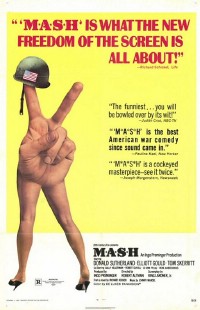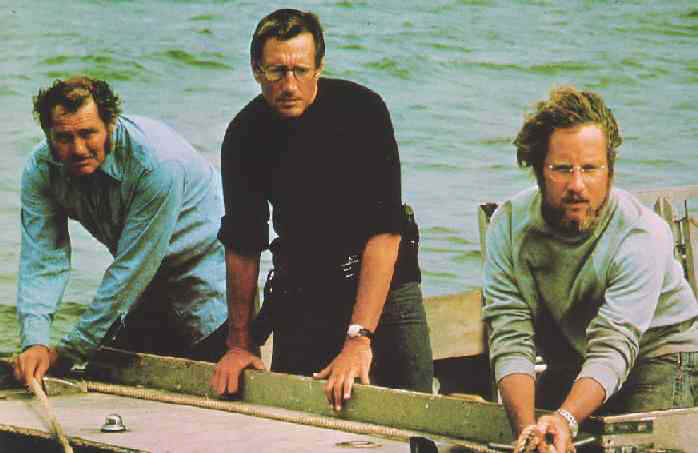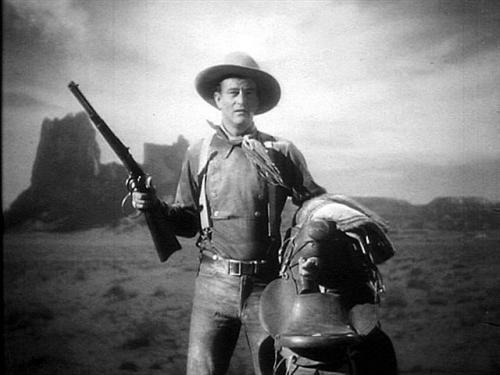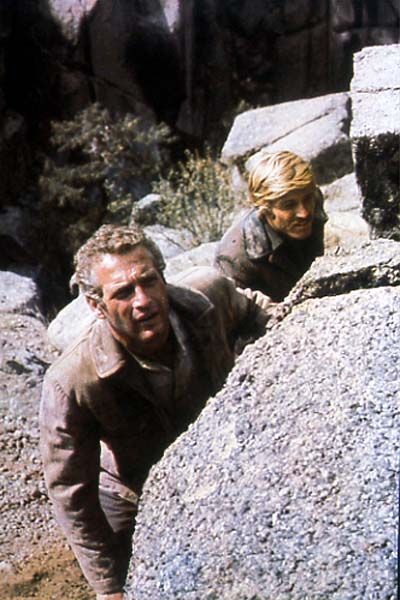|
bird's-eye view: A shot coming from directly above that tends to have a God-like
or bird's eye view perspective.
bit part: Small acting role that is usually only one scene long with very little
lines or acting.
black & white: Literally meaning a movie with no color. Before the invention
of color film stock all films were made in black and white.

black comedy: Comedy in which normally serious subjects such as war, murder, death,
and misery are made comical. Also referred to as a dark comedy. Examples include Robert Altman's 1970 film "MASH" (pictured),
"Monty Python & the Holy Grail" (1975), and "Fargo" (1996).
black face: Makeup technique of making an actor, usually white, to look like an
African-American. Example: Al Jolson in "The Jazz Singer" (1927)
Blacklist: A list of illegal actors, directors, etc. who were not allowed to be
hired from the years 1947-1951 following Sen. Joe McCarthy and the House of UnAmerican Activities Commitee's blacklisting
of people for political, social, or religious beliefs.
Blaxploitation: Sensational, low budget films of the 1970s featuring African Americans
actors and directors that broke the mold of black characteristics in film. Usually emphasized fads of the time. Examples:
"Superfly" (1972) and "Cleopatra Jones" (1973)
blimp: Housing or cover that the camera goes in to that prevents the sound equipment
from picking up extra sounds.

blockbuster: A huge financially successful film. Blockbuster was first applied to
Steven Spielberg's 1975 film "Jaws" (pictured). Other examples include "Titanic" (1997) and "Pirates of the Caribbean: The
Curse of the Black Pearl" (2003).
blocking a shot: The process that figures out where the camera goes, how lights
are arrainged, and actors position and movement for each shot.
body double: A performer who takes the place of an actor/actress in scenes that
require a close-up of body parts without a face visible. Body doubles are oftentimes used in nude scenes.
body makeup: Makeup applied below the neck or above the wrists.
Bollywood: Refers to the film industry of India, which is the biggest film industry
in the world.
bookends: Denotes scenes at the beginning and ending of a film that complement each
other and ties the film together.
boom: A moveable balanced pole on which a microphone, light, or camera is attached
and can be suspended overhead a scene and outside the frame during filming.
boom shot: A continous single shot from a moving boom that incorporates any number
of camera angles and levels. Alfred Hitchcock's 1948 film "Rope" was done almost entirely using this method.
bootleg: An unofficial and illegally copied or distributed film.
bowdlerized: Refers to the deletion of anything considered to be disturbing, vulgar,
or adult in content to sanitize a film for mass martket consumption and appropriate for children.
box office: Measure of the total amount of money paid by movie goers to view a movie.

breakthrough role: Role in which an actor becomes prominent. Example: John Wayne's
breakthrough role was as the Ringo Kid in John Ford's 1939 film "Stagecoach" (pictured).

buddy film: When two mismatched persons are forced to work together. Examples include
1969's "Butch Cassidy & the Sundance Kid" (pictured), "The Defiant Ones" (1958), "Midnight Cowboy" (1969), and "Men in
Black" (1997).
building a scene: Using dramatic devices such as volume and emphasis to bring a
scene to a climax.
bumper: The pre-filmed segment at the beginning of films that contains the studio's
trademark or logo. Example: MGM's roaring lion.
|